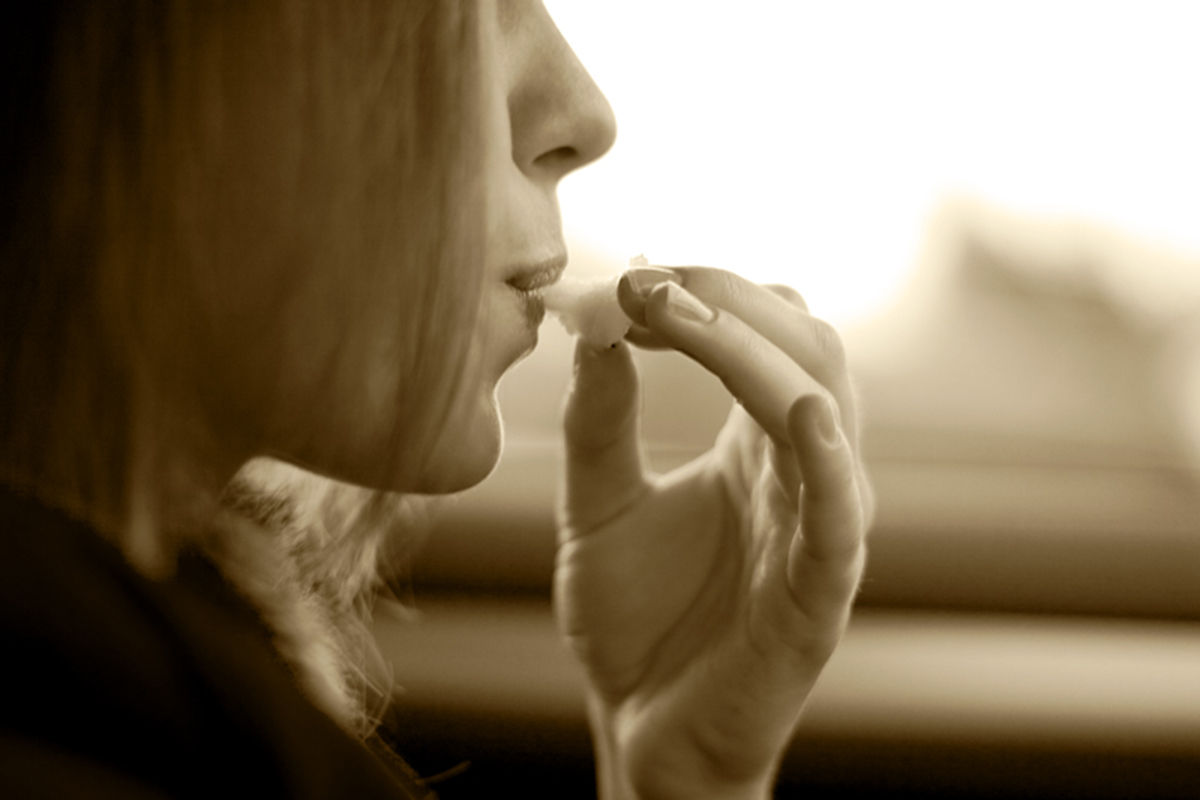Table of Contents
There are many, many home remedies out there that can make your teeth whiter and brighter. You don't have to pay a lot of money and actually, you may well be able to find the products in your kitchen cabinets. One of the most common home remedies is using baking soda on your toothbrush. It's a natural abrasive and will scrub away those stains - just make sure that you don't swallow the baking soda and if you do, spit it out immediately.
Apple cider vinegar can also be used as a whitening agent. However, being an acid, it can soften teeth, so it's vital to use it sparingly. Dilute it with water and swish it around in your mouth for a few minutes, followed by a thorough rinse with water.

Build these foods into your daily snacking routine and you'll soon notice that your teeth feel cleaner. Another tip is to chew sugar-free gum. Chewing it also triggers the release of saliva, which helps to clean teeth - plus, that saliva helps to neutralize acids in the mouth, which can reduce your risk of tooth decay. Generally, the more saliva in your mouth, the better, especially when it comes to clean, white teeth.
Oil pulling, an ancient Indian technique, involves swishing a tablespoon of oil, typically coconut, sunflower, or sesame, in your mouth for 15-20 minutes, then spitting it out. This method not only promotes whiter teeth but can also enhance overall oral hygiene.
What If I Have Veneers?
If you have a lot of expensive dental work, such as veneers, bridges, caps, crowns or false teeth, beware of the whitening treatments. These treatments won't lighten teeth that are not real - which means that they'll stand out in your mouth against your whiter "real" teeth, making your false teeth all the more obvious. The only way to get brighter or whiter manufactured teeth is to have new ones fitted, which could be extremely expensive, so it's always best talking to your dentist about your teeth whitening options before you try anything at home.
Prevention is Better Than Cure
A number of lifestyle factors can cause discolored, stained teeth. Avoiding these can keep your teeth looking white and bright, which is far easier than trying to reverse stains. As we age, the enamel (the top layer of teeth that helps to protect it from damage) starts to wear away. The layer found just underneath the enamel, the dentin, isn't as white as the top layer and has a creamier color which can make teeth appear more yellow.
See Also: All You Need To Know About Teeth Whitening
Anything that is brightly colored, like wine, tea, coffee, sports drinks, sweets and sauces has the potential to stain your teeth. Acidic foods can also contribute to staining and this is due to the acid in the food wearing away the enamel.
Because teeth are softer without the enamel, it means that they're temporarily more likely to stain, so it's worth keeping away from acidic foods, or using a toothpaste that restores and hardens the enamel. The stronger your enamel, the healthier your teeth - and the healthier your teeth, the better they'll look, whether you use a whitening toothpaste or not.
Flossing daily helps remove plaque from between teeth, preventing discoloration in those areas. Investing in an electric toothbrush can also make a difference, as they often provide a deeper clean than manual brushes. Regular dental check-ups and cleanings (ideally every six months) will help remove surface stains and tartar, keeping your teeth looking their best.
- www.webmd.com/oral-health/ss/slideshow-10-secrets-to-whiter-teeth
- www.dailymail.co.uk/health/article-419134/The-best-way-teeth-whiter-white.html
- www.webmd.com/oral-health/tips-keep-teeth-white
- www.webmd.com/oral-health/features/foods-stain-teeth-feature
- Photo by shutterstock.com
- Photo courtesy of Inessa Akhmedova by Flickr : www.flickr.com/photos/kooklanekookla/2895673825


Your thoughts on this